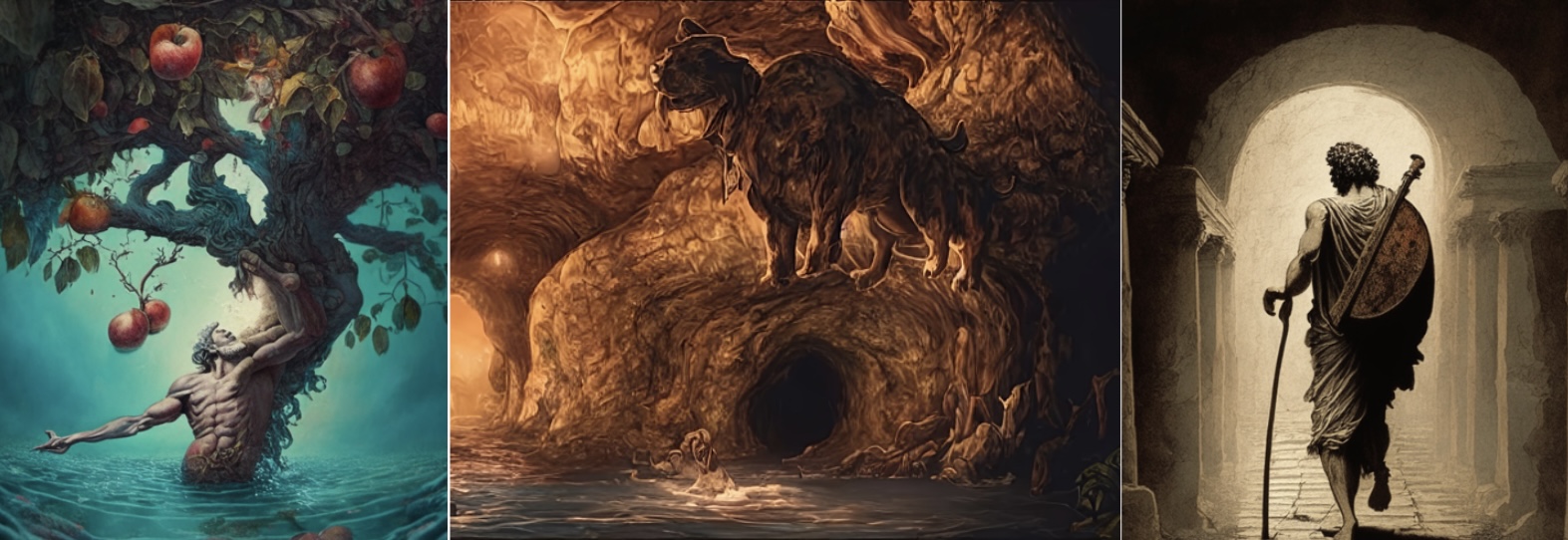Dr Stephanie Holton, Senior Lecturer in Classics & Ancient History
School of History, Classics and Archaeology
Faculty of Humanities and Social Sciences and Academic Services
What did you do?
As part of studying ancient descriptions of the Underworld, students used the AI generative tools NightCafe and GenCraft to create visual representations of self-chosen textual sources.
Who is involved?
Students on the modules CAC2070/3070 Exploring the Ancient Greek Underworld and CAG2001 Greek Interpretation of Texts.
How did you do it?
Students chose a section of text describing the Underworld that they wanted to analyse in closer detail. Working from either an existing translation (for non-language students) or the original Greek text (language students), they identified key features of the passage and then experimented with inputting different commands into their selected AI tool to generate an accurate visual representation.
Why did you do it?
Understanding the imagery within a textual source is a fundamental part of literary analysis, whether reading in translation or in the original language. Ancient descriptions of the Underworld can vary in detail and scope – ancient writers combine complex literal and figurative descriptions of landscapes, inhabitants, and experiences to create their versions of this wholly imagined space. Translating this textual information into a visual form by sketching or drawing can be effective but some students struggle with confidence in their creative skills; by using the AI tools, the focus remains on the content of the text rather than on artistic ability.
Does it work?
Students produced engaging and intricate representations of their chosen passages. It wasn’t simply a case of copying and pasting the text into the tool: students found that it took several iterations of their own instruction and description before the image they created reflected the details as well as the original emphasis of the text. Some of the outputs were incorporated into larger projects – including website design and board game illustrations.

Images of Cerberus, Tantalus and Orpheus, generated by students.
The Graduate Framework
This case study demonstrates the following attributes:
- Creative, innovative and enterprising
- Digitally capable
Further information
The AI tools used by the students:
NightCafe – https://creator.nightcafe.studio/
GenCraft – https://gencraft.com/
